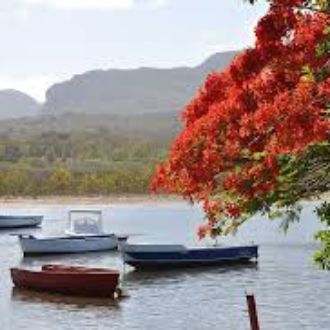
You know Mauritius as it is today, with its beaches, its high-class properties, its hotels, its attractions, its malls, its skyscrapers, its roads…But do you know the island’s history? What makes it so special? The island might be only 45 kilometres wide and 65 kilometres long, but there is a lot to know about it! Here are some facts.
A bit of history
- The island was first discovered by Arabs, who called it Dina Arobi
- Then came the Portuguese, who spent very little time on the island, followed by the Dutch
- Mauritius earned its name from the Dutch lieutenant, Prince Maurice Van Nassau
- After the Dutch, the French settled in Mauritius in 1715, calling it Isle de France
- During the French colonisation, sugarcane cultivation became a very successful venture
- Unfortunately, the French had forcefully brought slaves to Mauritius in order to work in sugarcane fields. They were mainly from Africa and are the ancestors of many Mauritians
- Both the French and the British wanted to rule over Mauritius, which led to the Battle of Grand Port in 1810
- Despite their defeat in the Battle of Grand Port, the British managed to seize the island the same year
- The British abolished slavery in 1835 and no less than 200,000 Indian indentured labourers came to Mauritius between 1840 and 1870 as workforce to replace the slaves
- The two first British supporters of the democratisation of the Mauritian electoral system were Sir William Newton and Sir John Pope Hennessy
- The 1948 elections allowed women and literate inhabitants of Mauritius to vote, the first one on the island
- The first Mauritian Prime Minister, Sir Seewoosagur Ramgoolam, was elected in 1967
- Mauritius was granted independence on the 12 March 1968
- The island became a republic in 1992
Some general facts about the island
- Mauritius has been formed by a volcano
- The longest river of the island is Grande Rivière Sud Est, which you can visit during a catamaran cruise
- The tallest mountain is the Piton de la Petite Rivière Noire, which is 828 metres high
- The Paille-en-Queue is the National Bird of the island, although Mauritius is often associated to the Dodo, an extinct species of bird which could not fly, alive during the Dutch colonisation,
- The National Flower of Mauritius is the Trochetia Boutoniana, also known as “Boucle d’Oreille”, which you can find in the SSR Botanic Garden, in Pamplemousses
- The Mauritian National Flag bears 4 colours, and each has a significance: Red symbolises the fight for independence, Blue symbolises the Indian Ocean, Yellow symbolises the illumination of independence, and Green symbolises the plants on the island
- The island’s economy thrived a lot thanks to the sugar industry in the first years of its development. However, many sectors have flourished over the years on the island, such as that of the Information Technology, the Real Estate and Tourism, amongst others
Mauritius on the international scene
- Mauritius has good relations with almost all countries around the world, but has close relations especially with the People’s Republic of China and India
- As at 2018, the island was ranked 66th in the United Nations Human Development Index (out of 189 countries and territories)
- As far as sports is concerned, Mauritius won its first medal at the Olympic Games in 2008 in the boxing field. It was won by an athlete named Bruno Julie
- The island won the Indian Ocean Islands Game for the first time in July of 2019
One article isn’t enough to list all the facts about the beautiful Mauritius. Words don’t do justice to the island, you have to come and witness its awesomeness yourself!
